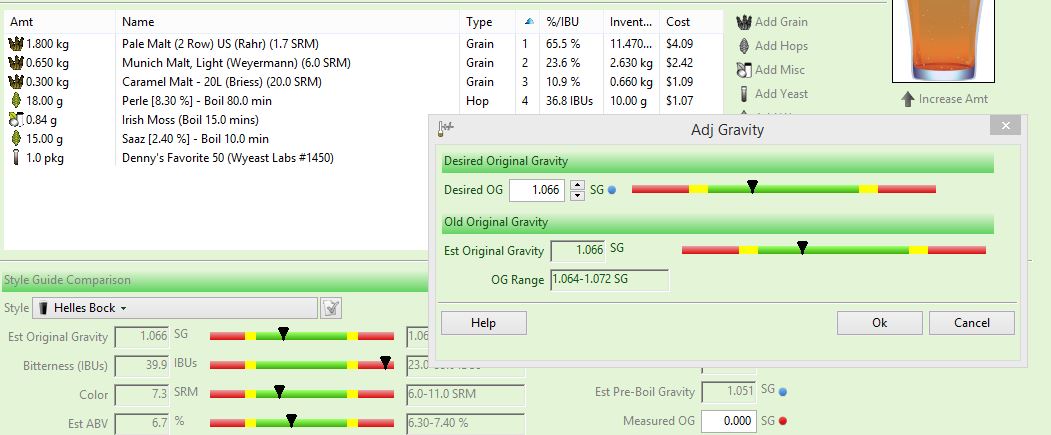Ryat66
Well-Known Member
This is a lingering question that I can't find an answer for and having searched and read a large number of threads but coming up empty, I thought I'd go ahead and ask it.
Most of the beers that I make come from BCS. The recipes are given as 6 gallon recipes at 70% but I target 6 gallons at 80%, I use Beersmith so the scaling is easy. Specifically, I am looking to make Jamil's Oatmeal Stout so, I built the recipe with his batch parameters and then scaled it to my system profile. Obviously, in going to a higher efficiency with the same batch size I am going to need less grain to match the same gravity and color, I understand that part.
However, the reduction in specialty grains concerns me because I would now be using less specialty malts in the same volume of liquid just to meet the scaling. Isn't that going to result in a different tasting product? Or, by achieving a higher efficiency, am I still extracting the same proportions of flavor as I would at the lower efficiency?
Most of the beers that I make come from BCS. The recipes are given as 6 gallon recipes at 70% but I target 6 gallons at 80%, I use Beersmith so the scaling is easy. Specifically, I am looking to make Jamil's Oatmeal Stout so, I built the recipe with his batch parameters and then scaled it to my system profile. Obviously, in going to a higher efficiency with the same batch size I am going to need less grain to match the same gravity and color, I understand that part.
However, the reduction in specialty grains concerns me because I would now be using less specialty malts in the same volume of liquid just to meet the scaling. Isn't that going to result in a different tasting product? Or, by achieving a higher efficiency, am I still extracting the same proportions of flavor as I would at the lower efficiency?



